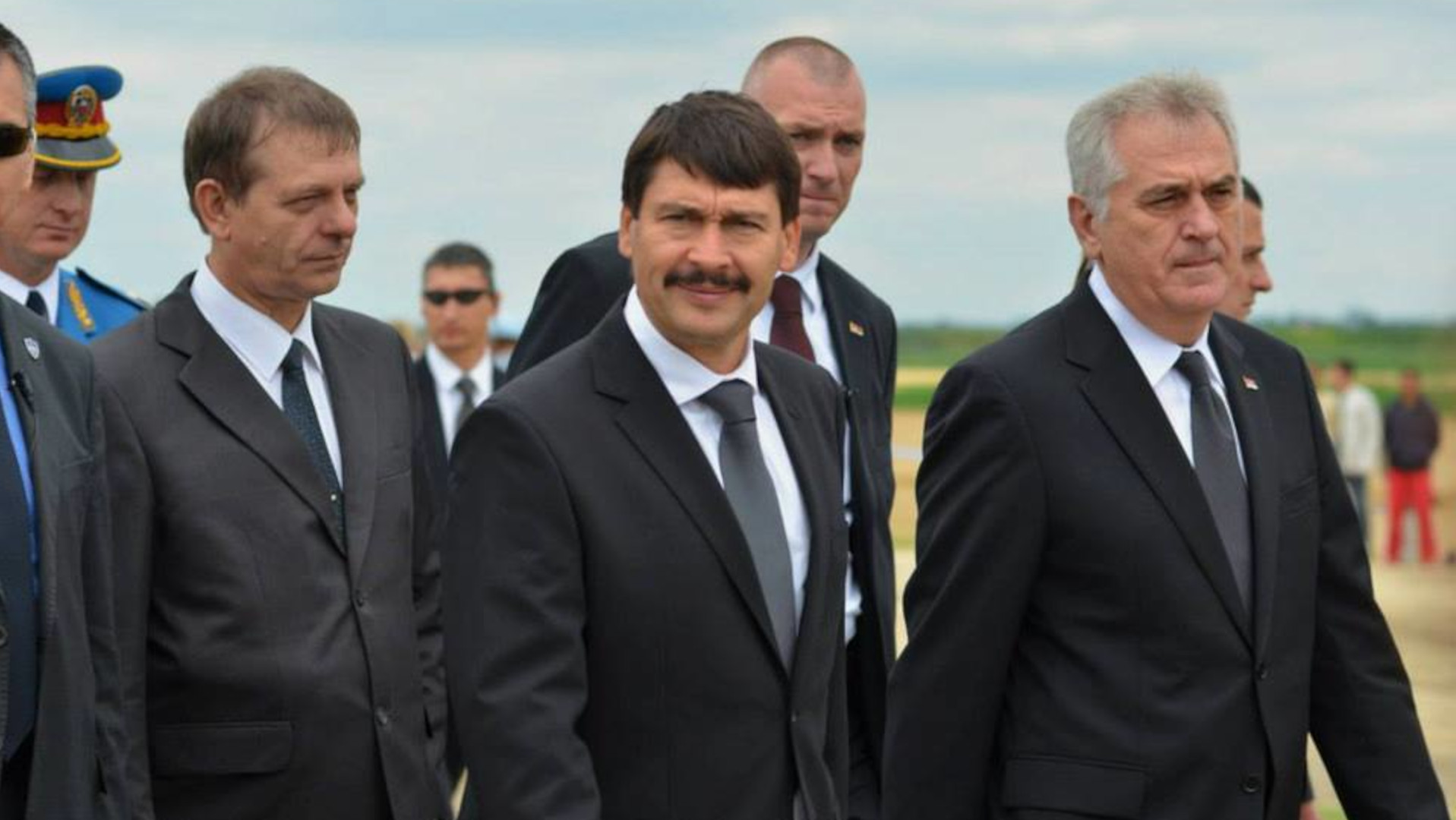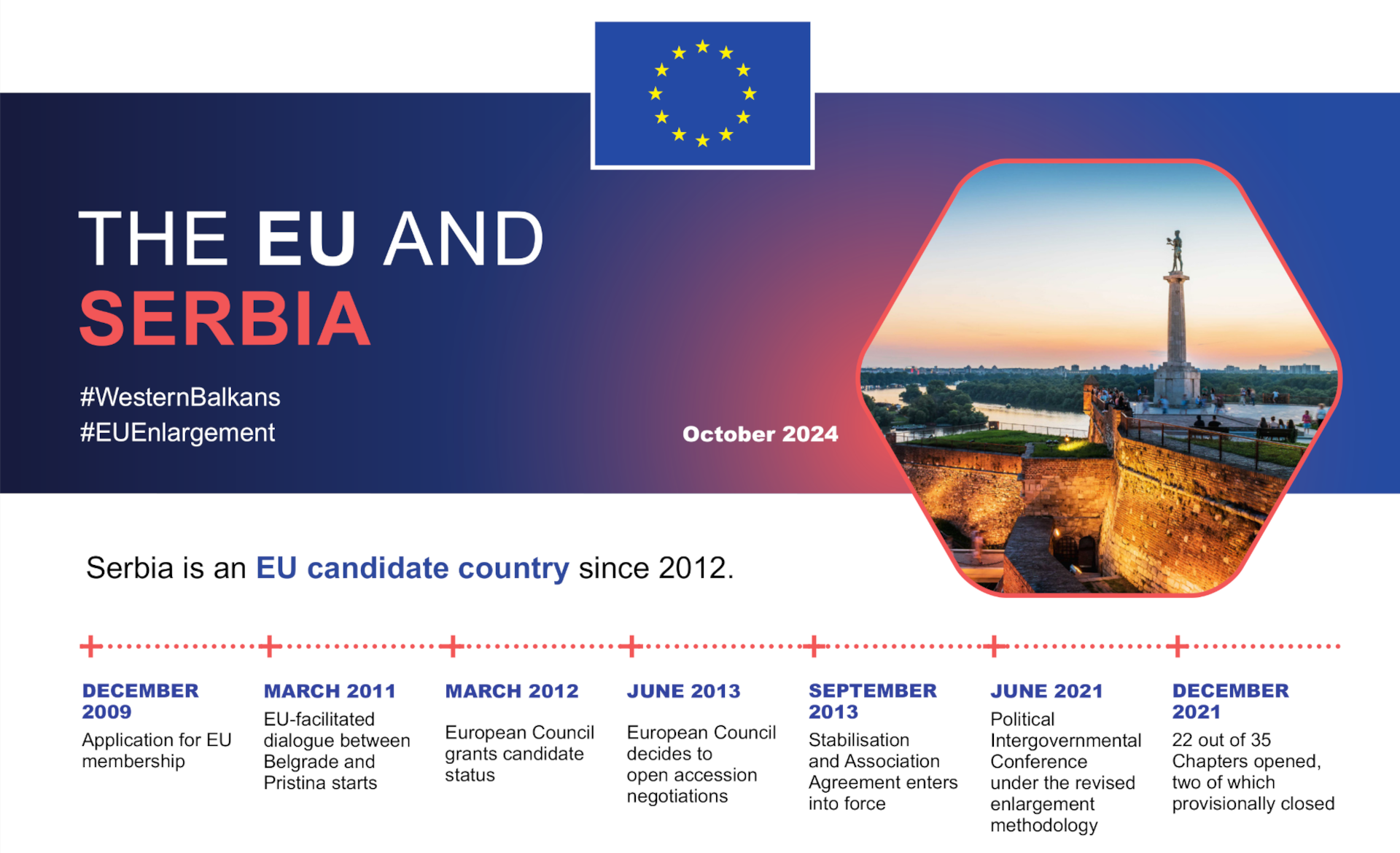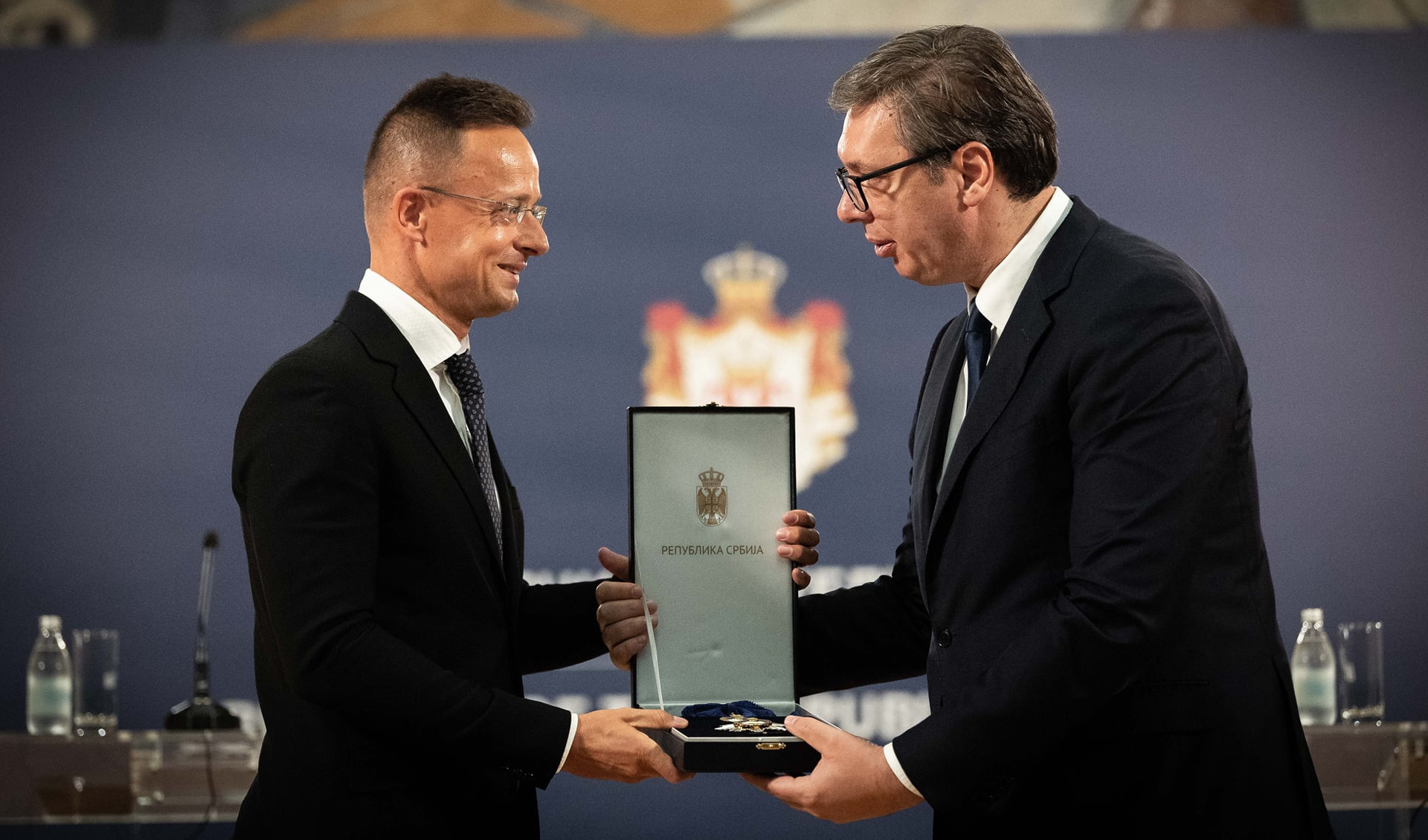The https://english.atlatszo.hu use cookies to track and profile customers such as action tags and pixel tracking on our website to assist our marketing. On our website we use technical, analytical, marketing and preference cookies. These are necessary for our site to work properly and to give us inforamation about how our site is used. See Cookies Policy
It’s a love story – how Serbia and Hungary found each other and never let go
In Eastern Europe, good fences usually make good neighbors. Many of the countries have long-harbored animosity towards each other, often due to a history of wars, betrayals, disputes over cross-border ethnic minorities, and arguments over who invented which cabbage dish. Not so, however, with Hungary and Serbia – especially as of recently.
The two countries hypothetically represent the border between Eastern and Western Europe, although Hungary has been accused recently of Balkanization. Even with the country’s significant backsliding, however, there is no doubt that the two have significant cultural differences.

And yet, Prime Minister Orbán and President Vučić have developed a beautiful friendship of sorts that has flourished into one of Europe’s tightest alliances. Some commendable progress has been made – diplomatic rapprochement over the protection of national minorities, for example, or strategy based on regional interests.
Some less commendable regression has also been felt – the two have become the Thelma and Louise, the Bonnie and Clyde, the Mario and Luigi of democratic backsliding. They have toyed with divisive rhetoric and sensationalism, public media capture and less-than-fair electoral campaigns.
The two nations haven’t always been this tight.
Before 2010, the relationship was acrimonious – ethnic intolerances, slurs, assaults on Hungarians, and hostile policies made the Hungarian minority feel unwelcome in their own birthplace of Vojvodina.
How did we go from there to détente between the McCartney and Lennon of illiberal democracy?
The 90-year freeze
The 20th century bilateral relationship was largely shaped by an opportunistic attempt from Hungary during World War Two to reclaim parts of the southern territories it lost after World War One.
Hungarian military forces raided Novi Sad in January 1942 and murdered Serbian and Jewish civilians – close to 4,000 people, according to a 1992 study. Serbian partisans retaliated in the winter of 1944, scorching much of the region and killing Hungarian civilians in Vojvodina – estimates range from 11,000 to up to 40,000 casualties.
The gruesome tit for tat continued for 90 years.
Steps towards a thaw
By 2010, it was obvious that reconciliation wouldn’t happen organically. In December, the bilateral professional Hungarian Serbian Academic Joint Committee was established to investigate historical contention. In 2012, Hungarian President János Áder and Serbian President Tomislav Nikolić met in Budapest to agree to mutually honor the innocent victims of each nation.
In this spirit, Hungarian Deputy Prime Minister Tibor Navracsics participated in a January 2013 commemoration in Novi Sad for the victims of the 1942 executions, alongside Aleksandar Vučić, then Serbia’s Deputy Prime Minister. Six months later, in June 2013, the Serbian President reciprocated, standing with his Hungarian counterpart at a memorial ceremony in Čurug, held at the monument for the innocent Hungarian victims of 1944 and 1945.

Former President János Áder and Tomislav Nikolić in 2013, in Churogu. Hungarian Association of Vojvodina – VMSZ / Facebook
Hungarian President János Áder also issued an official apology in the Serbian parliament for Hungarian crimes during World War Two, and the Serbian parliament condemned the Serbian atrocities and the decrees of collective guilt – although one decree about the three settlements of Čurug, Žabalj, and Mošorin was not yet annulled.
After 2014, when the decrees were officially lifted, the two countries started down similar paths towards a historic nostalgia and nationalism. Both leaders repeatedly emphasized shared histories of collaboration and friendship.
Even with the thaw, however, reconciliation was incomplete – for one, the much-awaited findings of the Hungarian Serbian Academic Joint Committee on Vojvodina were never published. Serbian President Tomislav Nikolić also failed to offer an official apology on behalf of Serbia.
Problem Allies in EU Integration
Serbia signed the Stabilization and Association Agreement with Brussels in 2008, marking a significant step toward EU integration. Hungary, though always supportive of the Western Balkans’ EU accession, became a fervent advocate for Serbia’s membership under the second Fidesz government after 2010.
In 2012, Serbia was granted EU candidate status due to the pro-European efforts of the then-ruling Democratic Party. However, the subsequent change in government slowed the process, with the first negotiation chapter opening only at the end of 2015.
A key condition for Serbia’s EU accession is resolving its conflict with Kosovo, which unilaterally declared independence following the 2008 referendum. Belgrade has not recognized Kosovo’s sovereignty and continues to – vocally – consider it a province. The country also failed to implement reforms that would enhance rule of law and protections for national and sexual minorities and people with disabilities – critical prerequisites for EU membership.

Extract from the European Union report on Serbia, October 2024. Source: European Commission. Source: neighbourhood-enlargement.ec.europa.eu
And while these areas weren’t improving, domestic politics took a rightward turn. The ruling Democratic Party spiralled into a crisis, which paved the way for the rise of the Serbian Progressive Party (SNS). The moderate faction of the far-right Serbian Radical Party grew rapidly in popularity and influence, and in 2012, Tomislav Nikolić assumed the presidency under the banner of this new political force. It was a pivotal moment in the Hungarian-Serbian rapprochement as the two countries met each other right of the field.
In 2014, the Hungarian Fidesz government anticipated the SNS’s parliamentary victory and began preparing for a long-term partnership.
It paid off – after the SNS secured power in the Serbian government that year, the two countries articulated shared strategic goals and institutionalized joint cabinet meetings.
The Hungarian government has reiterated its unwavering support for Serbia’s EU integration efforts and advocated for accelerating the European Union’s enlargement processes with a fervour that would be touching to anyone who can overlook the right-wing nationalist undertones of the relationship.
While Serbia was drawing heart eyes from Hungary, the EU became increasingly concerned when the country took centre stage during the 2015 refugee crisis as one of the key transit routes for predominantly Syrian asylum seekers.
Aleksandar Vučić, leader of the SNS and now the President of Serbia, remarked during the plenary session of the Parliamentary Assembly of the Council of Europe that Serbia had demonstrated a more “European” attitude in addressing the refugee crisis than some EU member states – whatever that might mean.
Later, Viktor Orbán stated at the European People’s Party congress in Madrid that Serbia’s importance had grown significantly due to its critical position in tackling the crisis. Serbia’s integration was now necessary, he argued, as a solution.
Aleksandar Vučić framed the 2016 snap Serbian election campaign around the narrative of EU integration. The government argued that early elections were necessary to secure a full mandate to complete the reforms and lead Serbia to the gates of the European Union.
As a result of these elections, the SNS secured a majority in the provincial parliament and took control of most municipalities, including Subotica.
The opening of accession chapters began to lag – Serbia had repeatedly failed to meet deadlines with the required reforms. Hungary and Serbia anticipated rapid progress towards accession in 2019 when Hungarian diplomat Olivér Várhelyi was appointed head of the EU’s Neighbourhood and Enlargement Policy Commission – the progress that did come, however, was a letdown.

Oliver Várhelyi and Aleksandar Vučić on the Belgrade-Niš railway line in February 2023. Source: Facebook
Between 2015 and 2021, Serbia opened 22 of the 35 EU accession chapters, and two of those were temporarily closed. The earliest proposed date for accession was 2025 – according to Várhelyi, it is uncertain whether Serbia will join within the next five years.
The European Commission’s latest country report offers an explanation to the delay – no progress in almost any of the areas, bar publishing statistics and taking steps on the environment and climate change.
Kosovo relations have somehow worsened since 2013, while there has been an absence of reform on the judiciary, rule of law, freedom of expression and the press.
Aleksandar Vučić has reaffirmed Serbia’s commitment to the European path, and he continues to view Hungary as a crucial ally – but none of this seems to be helping the country much.
Grand diplomatic gestures
While the EU is less than convinced, Hungary, it seems, is smitten, and the two nations’ politicians have continued to engage in grand diplomatic gestures.
Between 2013 and 2019, four new border crossings were opened: Királyhalom–Ásotthalom, Horgos–Röszke 2, Hadikfalva–Bácsszentgyörgy, and Rábé–Kübekháza.
More controversially, in 2016, Fidesz lobbied ethnic Hungarians in Serbia for votes during the Serbian elections.
Viktor Orbán visited Subotica on April 13, urging Vojvodina Hungarians to participate in the parliamentary elections, stating that “it is important that Belgrade has a government with which the Hungarian government (…) can govern together.” Vučić went on to win the parliamentary election, maintaining his coalition with the Alliance of Vojvodina Hungarians (VMSZ).
The Hungarian endorsements aren’t exclusive to national elections. In municipal and provincial elections, support typically goes to the VMSZ, while in presidential and national parliamentary elections, Hungarian officials back SNS candidates.
There is reciprocal interests – as previously reported, Vojvodina Hungarians have been eligible to vote in Hungarian parliamentary and European Parliament elections since 2014. Over the past six years, the Hungarian government has secured around 40,000 stable voters from Vojvodina—nearly 70% of the VMSZ voter base—giving it significant influence over VMSZ supporters.
This influence was essential for Fidesz to help the Hungarian minority in Vojvodina accept the coalition agreement that the Alliance of Vojvodina Hungarians (VMSZ) had made with the Serbian Progressive Party (SNS) back in 2014. This agreement, which allowed the VMSZ to join the government coalition, was initially met with scepticism from many Hungarians in Vojvodina.
Hungarian Minister of Foreign Affairs and Trade Péter Szijjártó first appeared at an SNS campaign event in 2016. Since then, Hungarian delegations have become regular participants in Serbian electoral events. In 2017, when Vučić ran for the presidency, Szijjártó heaped praise on the candidate in broken Serbian – another practice that has become popular over the years at rallies in Belgrade.
Vučić reciprocated this gesture in 2021, speaking a single sentence in Hungarian when he joined Hungarian Prime Minister Viktor Orbán at the groundbreaking ceremony for the Subotica–Szeged railway.
The love fest continues. Serbian and Hungarian leaders began bestowing prestigious awards on each other starting in 2021 – Péter Szijjártó, for example, received one of Serbia’s highest state honors for his role in strengthening ties between the two countries. No, they tell each other – you’re the best. It’s a rom com, but instead of chocolate and flowers, they trade medals of arbitrary honors.

Minister of Foreign Affairs and Trade Péter Szijjártó receives a state decoration from President Aleksandat Vučić in Belgrade on 8 July 2021. Source: Facebook, Péter Szijjártó
Head honcho Viktor Orbán obviously could not go sans recognition, and he took home some of the prettiest prizes of them all – the Serbian Orthodox Patriarch Porfirije presented him with the Order of Saint Sava in its gold class, while President Aleksandar Vučić honored him with the Order of the Republic of Serbia. In 2024, Vučić, on Orbán’s recommendation, was awarded the Hungarian Order of Merit by Hungarian President Tamás Sulyok.
During the award ceremony, Vučić remarked that back in 2009, when neither country was governed by their current administrations, a principled agreement was made to establish a genuine and profound friendship should political changes occur in Serbia.
Today, we are historical witnesses to this beautiful friendship. Netflix is probably already working on the movie.
Written and translated by Vanda Mayer. Hungarian version of this story written by Virág Gyurkovics can be found here.

